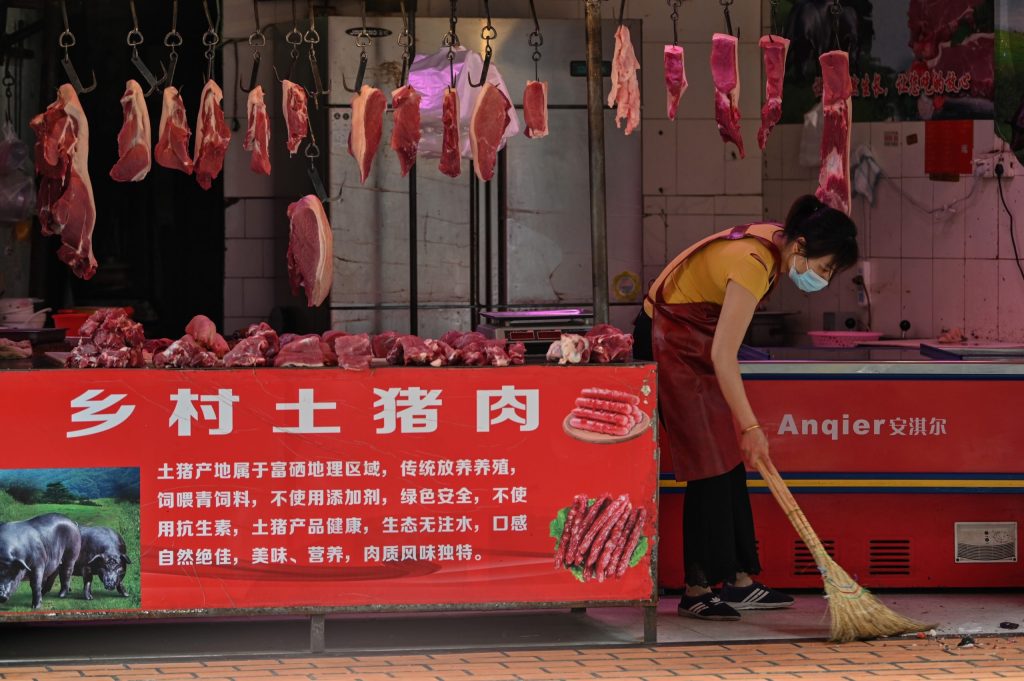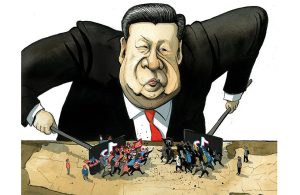Should we believe the conclusions of the World Health Organization (WHO) report into the origins of the SARS-CoV-2 virus which, as expected, dismissed the possibility of a laboratory accident while giving credence to the theory that the virus was imported via frozen foods? The first thing to note is that the report does not even claim to be independent — it is billed as a ‘joint WHO-China study’. It deserves to be read as such: as the product of an undemocratic government that has every incentive to deflect any responsibility for a pandemic that has, to date, been blamed for 2.7 million deaths globally.
The report puts forward four hypotheses: that the disease was the result of direct zoonotic transmission — animal to human — most likely a bat; that it arrived via an intermediate animal host — developing in one animal, jumping to a second and then on to humans; that it arrived via frozen foods imported from abroad; and that it occurred as a result of a laboratory accident. The second of these hypotheses is considered the most likely. The third is deemed to be ‘possible’ while the last is dismissed as ‘extremely unlikely’. The study’s reasoning behind labelling the frozen food hypothesis as ‘possible’ is as follows:
‘The supply chains to Huanan market included cold-chain products and animal products from 20 countries, including those where samples have been reported as positive for SARS-CoV-2 before the end of 2019 and those where close relatives of SARS-CoV-2 are found.’
The report prefers this explanation to the possibility that the virus arrived at the market via domestically-produced live food on this basis:
‘There is evidence that some domesticated wildlife, the products of which were sold in the market, are susceptible to SARS-CoV, but none of the animal products sampled in the market tested positive in this study. In the early phase of pandemic, due to lack of awareness of the potential role of cold chain in virus introduction and transmission, the cold-chain products were not tested.’
It further goes on to support the suggestion by stating that ‘since the near-elimination of SARS-CoV-2 in China, the country has experienced some outbreaks related to imported frozen products in 2020’, and then throwing in the hint: ‘There is some literature suggesting SARS-CoV-2 may have been circulating earlier as indicated by sewage testing in Spain and Italy’.
In other words, the WHO tested animal products for the virus (some time after the first humans became infected) and found none. It didn’t test frozen foods, therefore frozen foods are more likely to be the cause. Moreover, look, there is faint evidence that the disease may have been in circulation in Europe before it was officially in circulation in China. Therefore, why not look to Europe for its origins? This rather flies in the face of other evidence. While there is some evidence of the virus being in circulation outside China in 2019, as this Cambridge University study explains, Americans who were found to be carrying an early strain of the virus had a history of residence in Wuhan. Moreover, the first serious cases of COVID turned up in Wuhan. It was several weeks before cases of COVID were picked up in the West.
As for dismissing the possibility that SARS-CoV-2 originated in a laboratory, the report states: ‘There is no record of viruses closely related to SARS-CoV-2 in any laboratory before December 2019, or genomes that in combination could provide a SARS-CoV-2 genome.’ The lack of evidence in the joint WHO-China study does not directly contradict the idea that it may have been developed. A University of Innsbruck study from last November concluded that ‘an artificial origin of SARS-CoV-2 is not a baseless conspiracy theory that is to be condemned’. Microbiologist professor Richard Ebright similarly told the Sunday Times last year that there is ‘a distinct possibility that work done in the laboratory [on viruses] may have resulted in artificial in-laboratory adaptation that erased those three to five decades of evolutionary distance’ resulting in the development of SARS-CoV-2.
The WHO-China study further argues that a laboratory accident is implausible because biosecurity at the Wuhan Institute of Virology is so tight. The report does, however, contain an interesting nugget: ‘The Wuhan CDC laboratory moved on December 2, 2019 to a new location near the Huanan market. Such moves can be disruptive for the operations of any laboratory.’
In other words, a laboratory that was known to be working with SARS-type viruses, and to have isolated very similar viruses, happened to move one of its laboratories to a building close to a market where, a few weeks later, a disease caused by a novel SARS virus broke out. You can make your own mind up, and of course, we have no conclusive proof either way on this theory or on any of the other theories, but does the theory of a laboratory accident really deserve to be dismissed so lightly?
This article was originally published on The Spectator’s UK website.


















